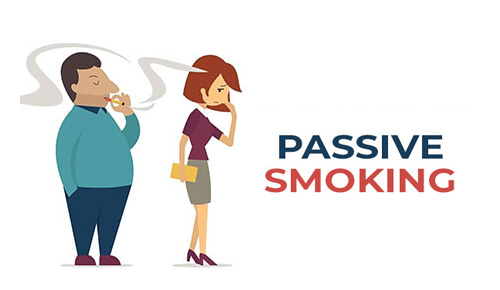The Hazardous Effects of Passive Smoke
By Maawiya Mohammed
In your course of existence in this wonderfully made earth of ours, you must have passed by someone who was smoking a cigarette and you either held your breath, closed your nose and mouth, or ran away quickly. Chances are, you may even have done all these at the same time. You thought to yourself once you passed the smoker then that is where it will end for you. A little nuisance, left behind. Nothing to worry about.
What if I told you that you were wrong and that the little nuisance could cause weighty health problems? That is why in this piece we are going to discuss the effects of passive smoke but before that, what is passive smoke?
According to the World Health Organization (WHO), passive smoke is the inhalation of tobacco smoke, called second-hand smoke (SHS), by people other than the smoker. It occurs when tobacco smoke enters an environment, causing its inhalation by people within that environment. This smoke can have serious health complications in otherwise healthy people. There is no safe level of exposure when it comes to second-hand smoke. SHS can lead to either short-term or long-term health issues.
Short-term health problems associated with second smoke are headaches, coughs, nausea, dizziness, eye irritation, and sore throat. Long-term effects of SHS bear risk factors of untold proportion. They include:
Cancers
Tobacco smoke contains hundreds of harmful chemicals. Many of these harmful chemicals that are in the smoke inhaled by smokers are also found in second-hand smoke. These harmful chemicals are not limited to but include benzene, cadmium, formaldehyde, butadiene, and acetaldehyde. Exposure to second-hand smoke is carcinogenic to humans. This means that it has the potential to cause cancer.
Cardiovascular Disease and Stroke
Exposure to second-hand smoke has immediate harmful effects on the heart and blood vessels which can cause coronary heart disease and stroke. Chemicals in cigarettes causes the blood to clot which in turn makes blood vessels swollen and inflamed. Subsequently, when the arteries that carry blood to the heart become swollen due to blood clots, the heart develops complications. This blockage is also what can lead to strokes.
Reproductive Health Problems in Pregnant Women
Women exposed to SHS are more likely to have new-borns with lower birth weights increasing the risk of more complications. A 2014 analysis found that maternal second-hand smoke exposure increased the risk of miscarriage by 11%. Females that are exposed while pregnant have higher risks of delivering a child with congenital abnormalities, longer lengths, smaller head circumferences, and neural tube defects. There is also a risk of having stillbirths. Infants exposed to second-hand smoke are more likely to die from sudden infant death syndrome than infants that are not.
Asthma and Other Health Problems in Children
A 2014 systematic review and meta-analysis found that passive smoking was associated with a slightly increased risk of allergic diseases among children and adolescents though in adults the evidence was weaker. Children with asthma who are exposed to second-hand smoke have more frequent and severe asthma attacks.
There is no safe amount of second-hand smoke exposure. The home is the main place many children and adults breathe in second-hand smoke. To protect yourself and those around you, do not smoke or let anyone smoke in your home or car, and encourage family members to quit smoking.

